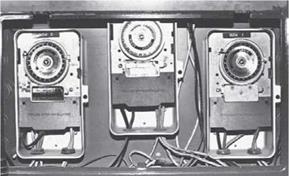In summary, no single recipe for correct lighting can be given. There will be varied settings, needs, and objectives to accommodate. Plants will seldom be the only consideration in the selection of lamps and the quality of illumination. When both plants and people are to be considered, a lamp should be selected that provides the yellow-green visible light needed to render human complexion, clothing, and furnishings attractive while still providing sufficient blue and red light to allow photosynthesis to exceed respiration in the plants. The cool white fluorescent lamp is ideal for such a situation provided that the ceiling is not too high and that growth of the plants is not an objective. If growth is desired, additional incandescent lighting can be focused directly on the plants. The use of more expensive growth lamps is unnecessary since they have not been proven superior to the ordinary cool white fluorescent in maintaining plant health, and they do not render color well. Any natural light that can be used advantageously will reduce the cost of lighting the interior planting.
As for light intensity, not all plants available from growers have been carefully studied to determine the minimum at which they will survive attractively. The PLANET, the FFA, and the colleges of agriculture in the major foliage production states should be queried by anyone responsible for creating an interior plantscape. The many books that purport to give lighting specifications and that stock the shelves of libraries nationwide are satisfactory for homeowners but not for professional use. Their information is often dated, usually based on greenhouse lighting, and may be questionable in accuracy. Recommendations should be sought that give lighting minimums in footcandles, not in general terms such as high, medium, and low. When plants are installed without documented knowledge of their lighting requirements, the situation is risky at best, and the plants must be watched carefully to determine if additional lighting is needed.
To ensure that lighting is of the right intensity and duration, a simple timing device may be necessary. The lights must shine on the leaves for enough time each day (twelve hours minimum) to allow adequate photosynthesis to occur. Should the hours of lighting have to be reduced for some reason, the intensity of the lighting must be increased to compensate (Figure 8-4). It does not seem to matter whether foliage plants
|
|
figure 8-4. A timing system can be used to provide supplemental light for an interior plantscape. (Delmar/Cengage Learning)
receive their needed lighting over a short or long period as long as the cumulative photosynthetic activity balances and slightly exceeds respiration. With flowering plants, day length often plays a critical role in determining if and when the blossoms will appear. Since interior plantings are currently valued most for their foliage, day length is of limited importance.




